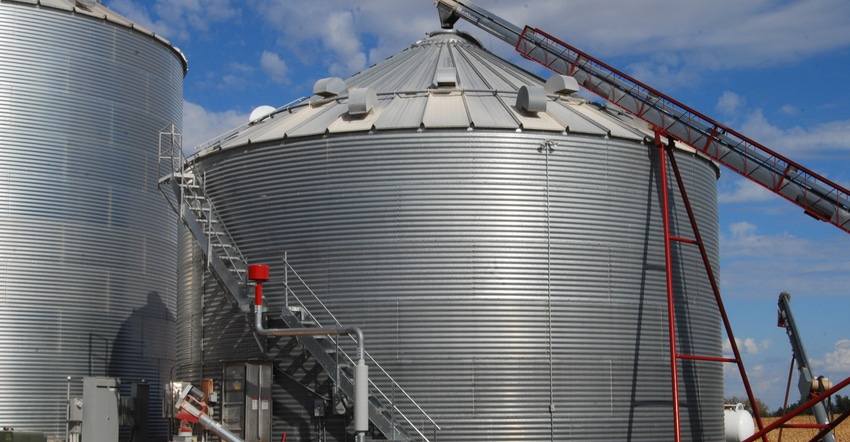
Without careful monitoring while corn and soybeans are in storage, grain quality can degrade. Greg Brenneman, Iowa State University Extension ag engineer, offers some tips to help keep stored grain in good condition this winter and longer.
• Watch the temperature. When outside air is cold, air inside the bin moves downward along the side of the bin, and then upward toward the center of the bin. The air coming up through the center will carry some moisture as it contacts the cool grain in the center of the bin. The moisture will condense and cause the grain in this area to lose condition and form a crust.
Crusting will keep air from flowing through the mass of grain and makes it impossible to keep grain in good condition. To prevent this problem, grain should be cooled in the fall to below 40 degrees F. Run the fans to cool the grain as soon as possible in the fall.
In spring, if the grain is dry it can be left from 30 to 40 degrees. This will minimize insect and spoilage activity in the bin. As weather warms, some warming of the grain will occur. This can be reduced by covering fans to prevent warm, moist outside air from moving into the bin.
If corn in the bin in spring isn’t already dry enough for safe storage beyond spring, you may be forced to dry it. Do this as soon as possible in the spring to try and avoid high dew point conditions. Also, if you have to aerate the grain to control a hot spot, you may be past the time for low dew points to re-cool the entire bin.
• Check grain regularly. You can use a grain probe and a thermometer to check grain temperatures by probing below the surface of the grain in several places. Record these temperature changes each time you check grain. Temperature cables installed in a bin also can be used to monitor for changes in grain temperature, to see if a hot spot is developing.
Another way to check stored grain is to turn the fan on and smell the first air that comes from the grain. If a musty odor is detected, problems may exist that haven’t been detected by checking the temperature of stored grain. If you suspect a problem, you may need to run fans to dry the grain. In some cases, grain may need to be removed from the bin.
Remember, covering the fan intake when not in use prevents outside air from moving into the bin. The cover also helps minimize insect and rodent problems.
• Leave the fan on long enough. Any time a drying or cooling front is started through the grain, make sure the fan runs long enough to move the front completely through the grain mass in the bin. Measure the temperature of the air as it exits the grain. When the air temperature coming out of the grain is equal to the average outside air temperature (temperature of air going in), the cooling cycle is complete.
• Keep safe storage moistures. For shelled corn to be sold by spring, the maximum safe grain moisture content is 15.5%. For storing up to one year, it’s 14%; for more than one year, it’s 13%. For soybeans that will be sold by spring, the maximum is 14%; for beans to be stored up to one year, it’s 12%.
For more information on managing stored grain, visit extension.iastate.edu/grain.
About the Author(s)
You May Also Like




